The river near my hometown, Bukan, Kurdistan, Iran, has had a special connection to my teenage mind, and I even shot my first photos there. However, its drying out over the last decade has caused me sadness. When I look at my country, I see that this river is not the only place that has fallen victim to the changing climate; there are many ponds, lakes, and green plains that have been affected by the recent drought and are being completely eradicated. In a project that I started in 2016 with the help of the Pulitzer Center on Crisis Reporting, I traveled to many parts of Iran to document the effects of climate change. I captured photos of a country that, according to data provided by NASA, will render 35 percent of its currently inhabited areas unsuitable for life within 20 years. This country ranks fifth in the world in terms of greenhouse gas production. I met people whose lives have been greatly affected by climate change. Most of them live in remote villages where there is nobody to help them, and they must face this problem on their own. I encountered landscapes that were once habitats for many species, lakes that were once a source of livelihood for fishermen, and ponds that had beautiful scenes to enjoy. However, all of them have now transformed into vast, dried, barren lands that remind me of apocalyptic movie scenes.

A woman strolls along a pier that once bordered the expansive waters of Lake Urmia in northwestern Iran. Since 1996, persistent droughts have led to the lake's significant reduction, now occupying merely 10 percent of its former expanse.
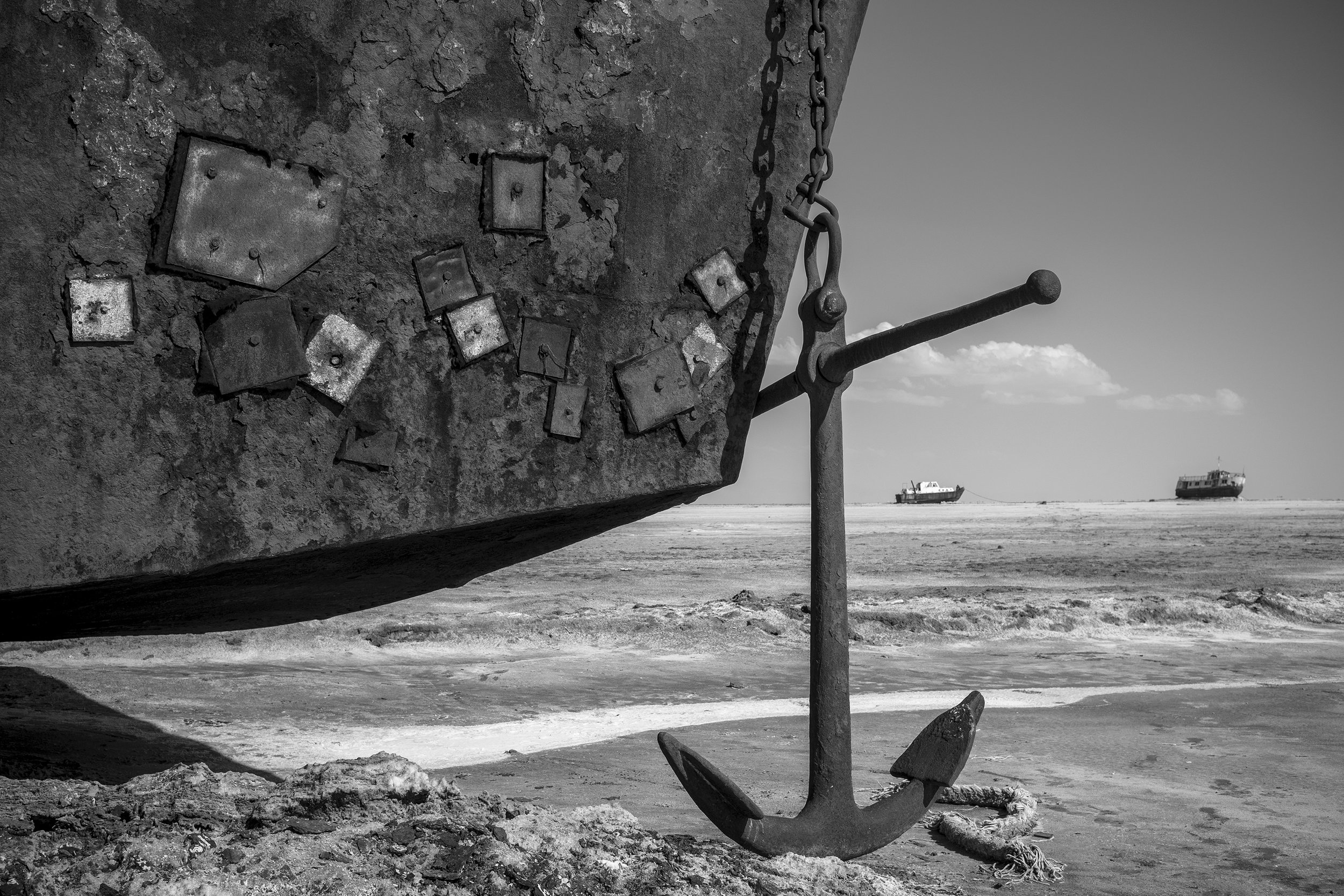
Remnants of a boat lie on the parched seabed of Lake Urmia near the port of Sharafghaneh, Iran. Drought conditions have adversely affected tourism in the region.
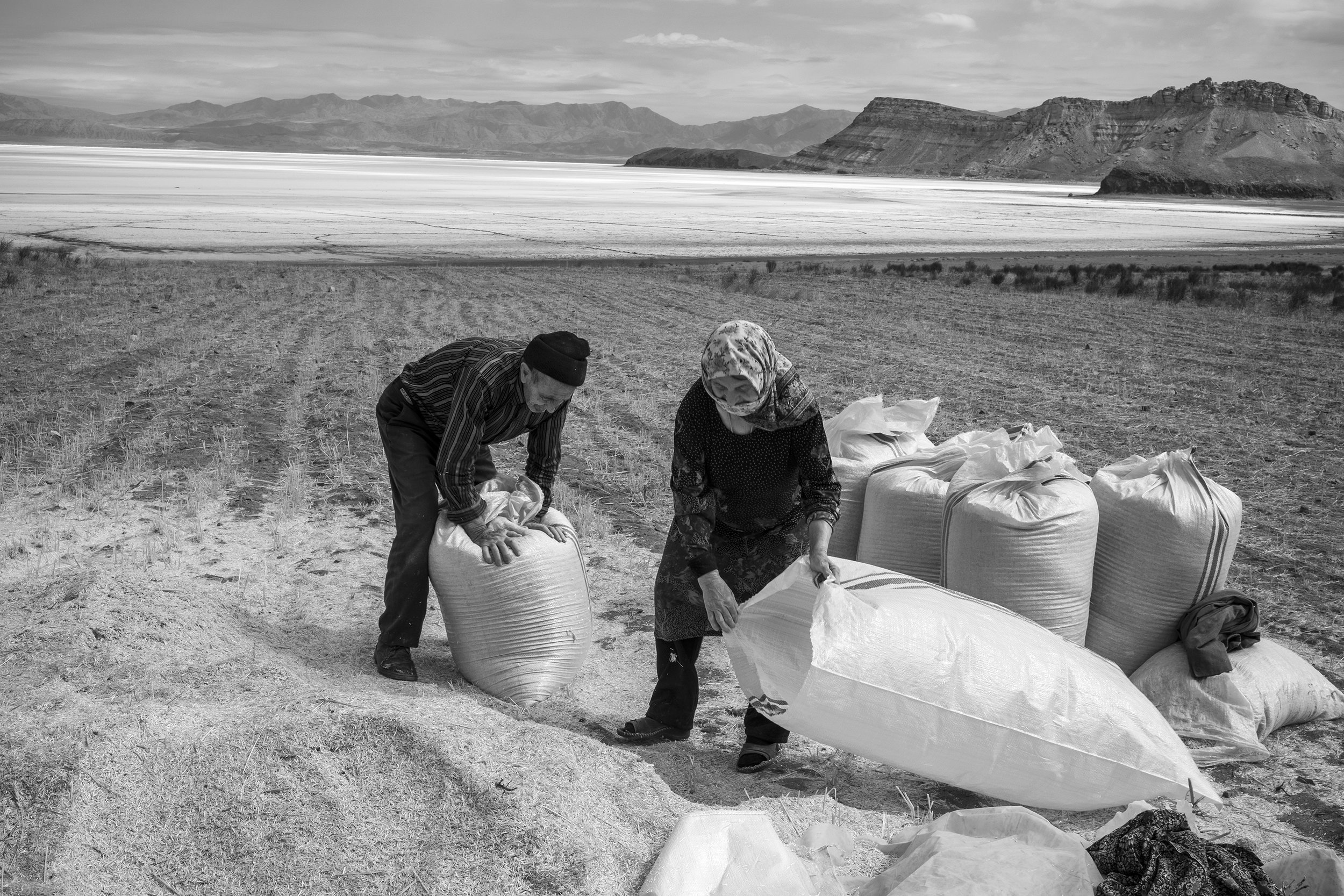
A couple tends to their farm near Lake Urmia in northwestern Iran, once renowned for its fertile soil and abundant water. However, as the lake has receded in recent years, depriving them of fresh water, they've struggled to sustain their livelihood.
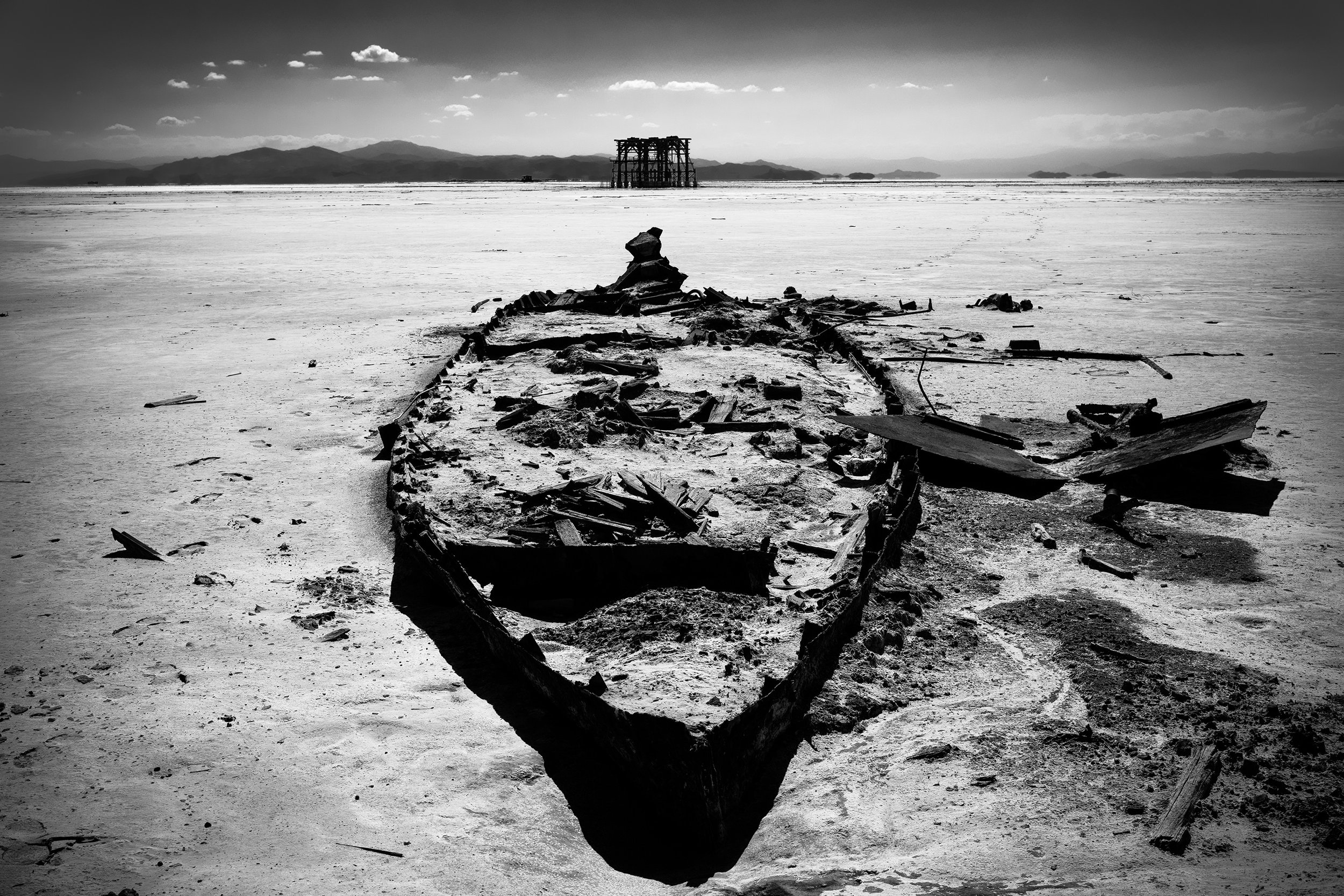
The skeletal remains of a cargo ship rest on the desiccated basin of Lake Urmia, Iran.
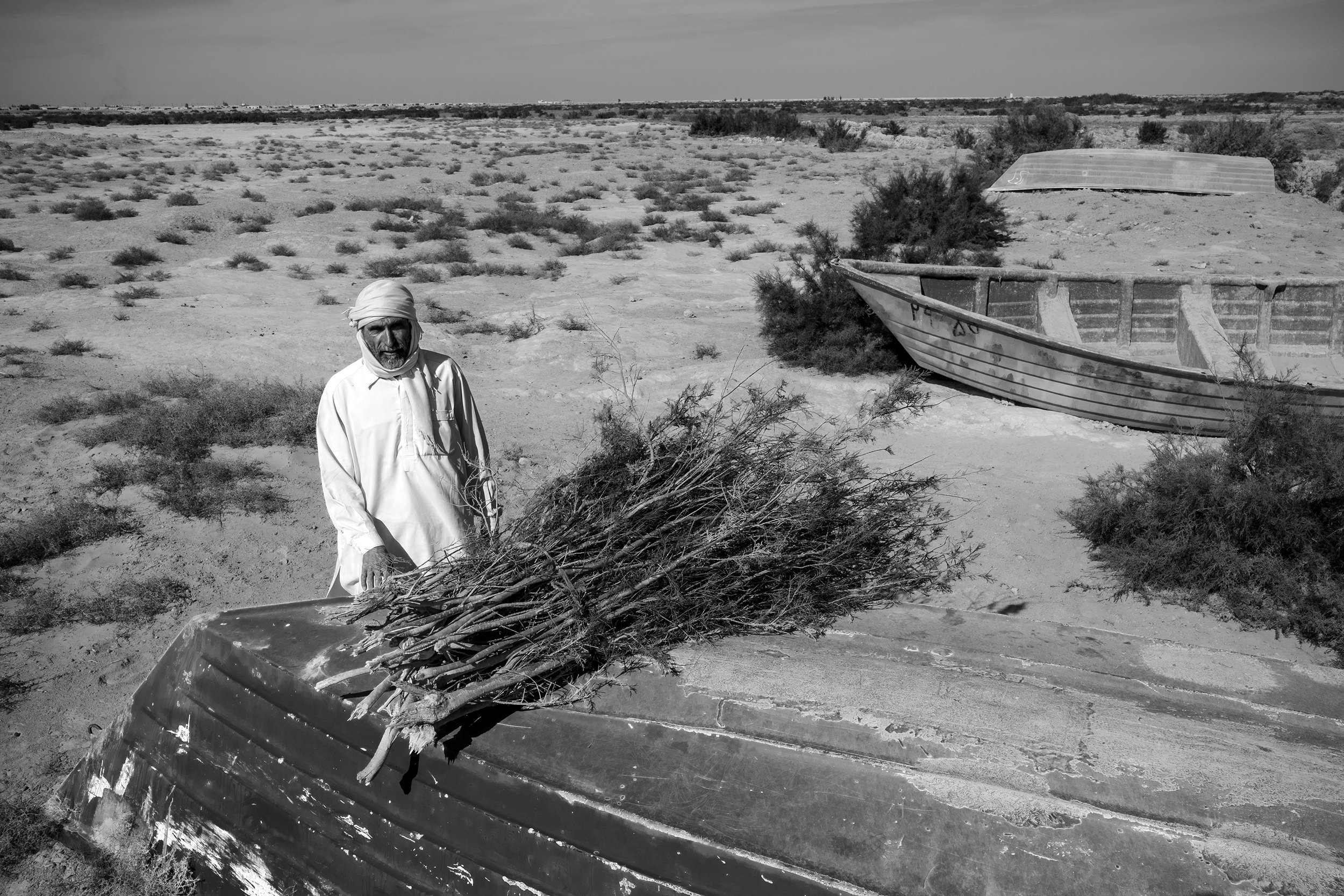
Once a fisherman, now collecting tamarisk reeds on the desolate seabed of Lake Hamoon for a livelihood. Situated on the Iran-Afghanistan border, the Sistan Basin ranks among the driest regions globally. Persistent drought and irrigation mismanagement have depleted the lake, adversely affecting wildlife and the community's sustenance.

Children play in a village near Hamoun Lake, situated close to the Afghanistan border in Sistan Province, southeastern Iran. The dwindling of the Hamoun wetlands has disrupted local vegetation and wildlife, leading to an ecological crisis.
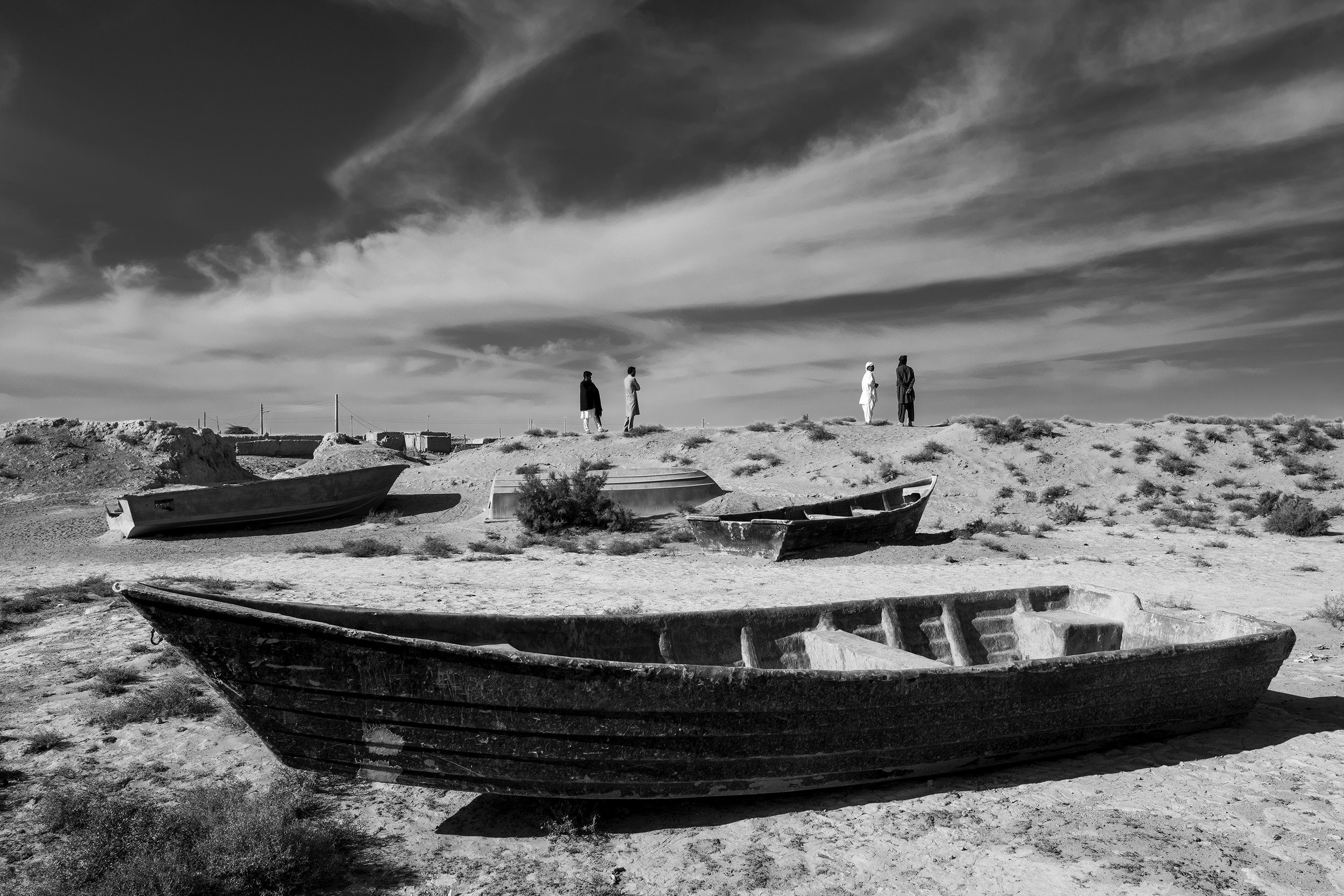
Fishermen gaze upon the dried Hamoon Lake in Sistan, Iran, once a thriving fishing spot. Due to severe drought over the past decade, many have lost their livelihoods, leading them to migrate to larger cities.

An aerial perspective showcases desiccated farmland near Zabol, a city located in Sistan Province, Iran.
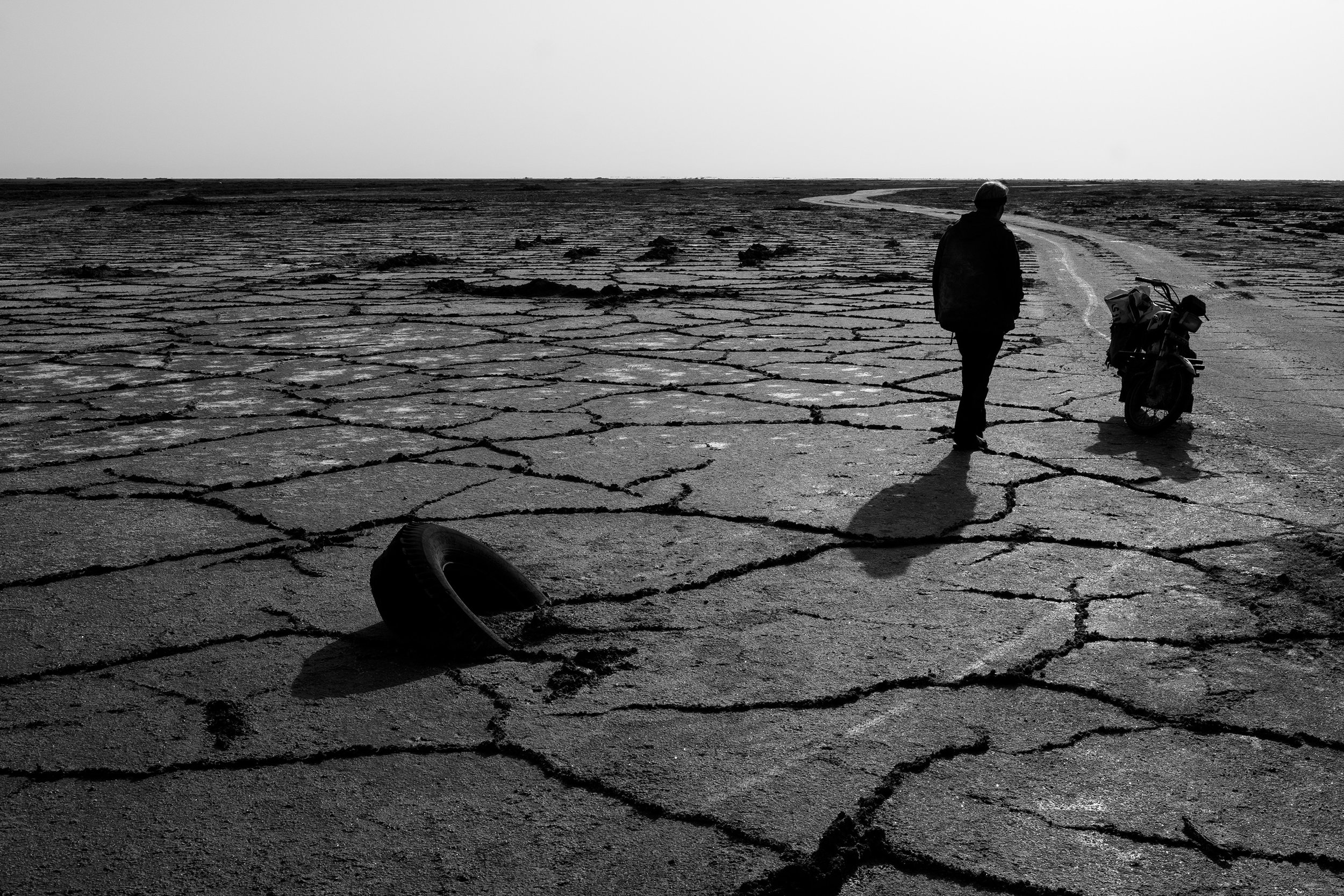
Cracked terrain of the Gavkhouni salt marsh, the terminal basin of the Zayandeh River in Isfahan Province, Iran. Persistent droughts and water mismanagement have exacerbated Iran's water crisis.

Desertification leads to biodiversity decline and exacerbates global climate change by reducing carbon sequestration and altering land-surface reflectivity. Planting desert shrubs serves as a mitigation strategy against desertification near the 'Gav Khuni' marsh in Isfahan province, Iran, which has experienced droughts attributed to climate change over the past decade.

From the iconic Khaju Bridge in Isfahan, Iran, a striking view unfolds, showcasing the starkly dried bed of the Zayandeh-Rood river, once a lifeline of the region.

Lake Bakhtegan, located in Fars province, stood as Iran's second-largest lake, serving as a sanctuary for flamingos and migratory birds. However, over the past decade, its waters have receded, transforming the once-thriving ecosystem into an expansive desert landscape.

People traverse the desiccated expanse of Lake Urmia in northwestern Iran, close to the Turkish border. Once among the largest saltwater lakes in the Middle East, its waters have dwindled significantly over the past two decades. This recent summer witnessed an alarming phenomenon where algae and bacteria tinted the receding waters a striking shade of red.

A parched farm lies adjacent to the receding Lake Urmia in northwestern Iran. Climate change-induced shrinkage of this once-salty lake has rendered numerous wells in the vicinity devoid of fresh water, impacting both drinking supplies and agricultural needs. Consequently, many surrounding farms have transformed into barren wastelands.
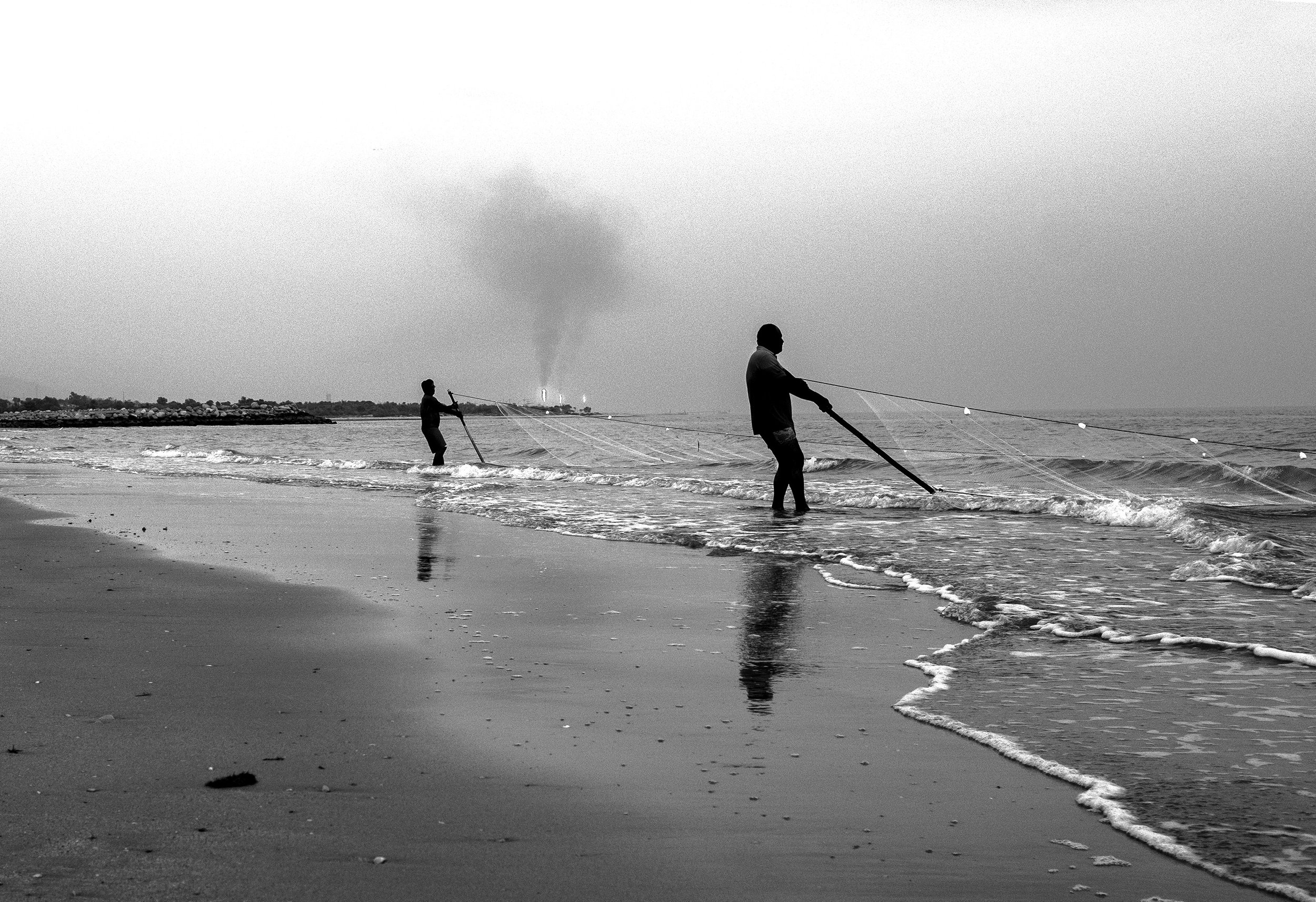
Fishermen operate in Kangan, Iran, situated near the South Pars field. While Iran stands as one of the world's primary oil and gas producers, it also ranks among the largest contributors to greenhouse gas emissions.

Students stroll along the seaside in Dayyer, located on the Persian Gulf coast of Iran, where just two months prior, the area experienced severe flooding. Iran's coastal regions face increasing threats from rising sea levels.

In an abandoned village along the coastal Persian Gulf, a straw weaver reflects, "We had access to underground freshwater for both drinking and agriculture four decades ago, but now we have nothing," he lamented. Escalating temperatures and dwindling freshwater sources have compelled numerous residents to abandon their homes in recent years.

Twins seek refuge from scorching heat waves and soaring temperatures attributed to climate change along the Dayyer port on the Persian Gulf coast in Iran. According to researchers at MIT, without significant global emission reductions by 2070, the Persian Gulf could witness heat waves so extreme that they would be uninhabitable for many humans.

A sailor seeks relief from a blistering 113°F heat by taking a dip in the port of Bushehr, situated along the southwestern coast of the Persian Gulf in Iran. Ironically, the oil extracted from this region eventually disperses into the atmosphere, further exacerbating climate change.

Oil flares illuminate Kharg Island, Iran's primary hub for oil exports in the Persian Gulf. While Iran ranks among the world's leading oil and gas producers, it also stands as one of the largest contributors to greenhouse gas emissions